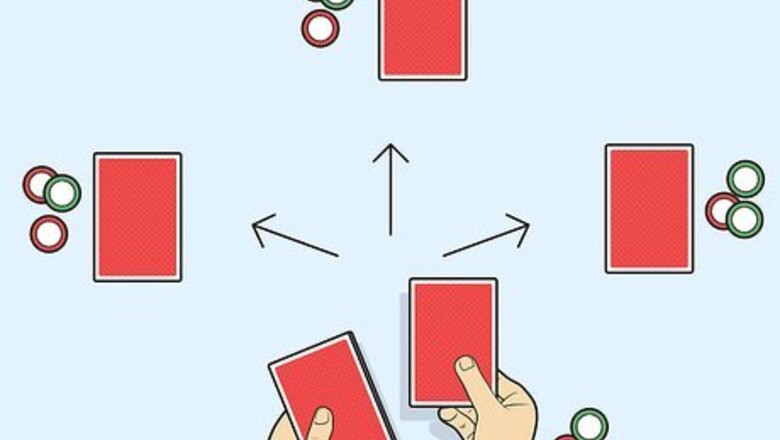
views
Shuffling and Cutting the Deck
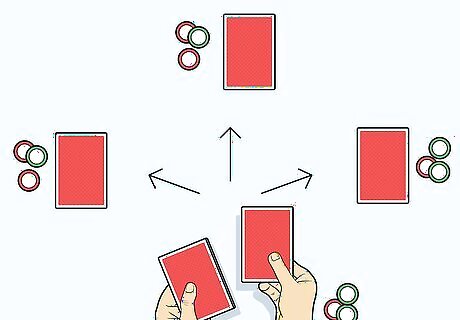
Deal a single card to each player to determine who will deal first. The player with the highest card value gets the privilege of dealing the first round. Aces are high when determining dealer order, which means that ace cards have the greatest value of all the cards in the deck. Alternatively, spread out the cards face-down on the table and have each player draw one at random. You can also decide who will deal first by simply talking amongst yourselves if you’re playing a casual game with friends. The dealer is usually given a disc-shaped token called a “button,” which they leave out in front of them on the table. This just makes it easier for everyone to keep up with who the dealer is at any given time. Any large coin or colored chip from a different set than the one you’re currently betting with can serve as a makeshift dealer button for home games.
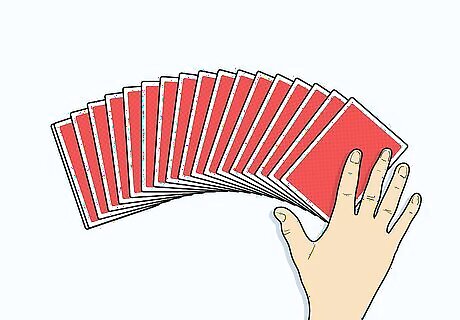
Fan out the cards face-down on the tabletop. Set the deck down and run your hand along the top to spread the cards out in a smooth arc or winding S-shape. This will allow you and the other players to visually confirm that all of the cards are present and accounted for, and that there’s nothing unusual about any of them. There are 54 cards in a standard deck of playing cards (including 2 joker cards). Texas Hold ‘em is played using all 52 primary suit cards. Fanning the deck before you begin the game also gives you a chance to make sure that nothing is out of place. Every now and then, a card may be facing the wrong way, or a card from a different deck might have somehow found its way into the deck you’re playing with.
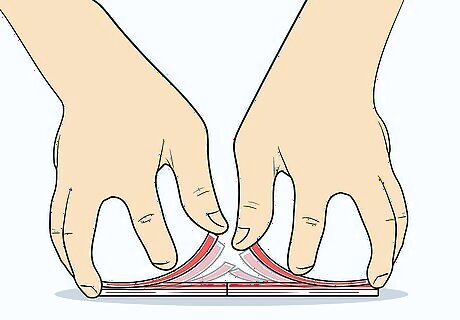
Shuffle the deck two or more times in a row. Many professional dealers favor the classic table riffle. Gather up the fanned cards and divide the stack into two roughly equal halves. Hold the halves close together against the tabletop with the bottom cards facing one another. Flex the cards lightly with your thumbs to make them shoot face-down onto the table rapidly, overlapping one another as they fall. If you prefer, you can also use another shuffling method, such as the overhand, weave, or Hindu shuffle. Go with whichever technique is most natural for you. Regardless of the shuffling technique you choose, plan on repeating it at least twice, one after the other. This will help ensure that each deal is as random as possible and therefore not “stacked against” any of the players.
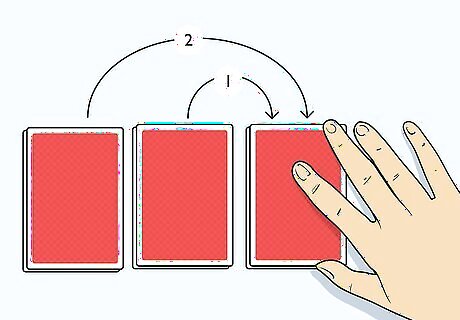
“Strip” the deck into thirds and shuffle again. Hold the deck in one hand and use your other hand to remove approximately one third of the cards from the upper part of the stack. Set these cards on the table face-down. Next, take the middle third and place it on top of the first section. Finally, set the bottom third on top of the stack to reassemble the deck. As the dealer, it’s crucial that you learn to shuffle the deck thoroughly in order to avoid accusations of bias or cheating. It’s not uncommon for professional poker dealers to shuffle as many as five or six times before dealing a single card.
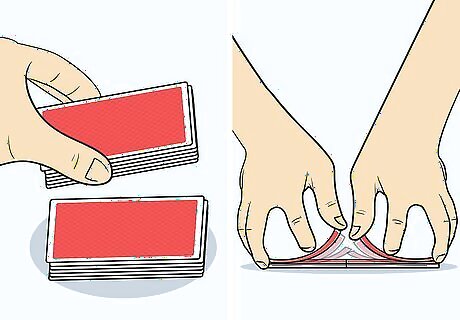
Cut the deck into two halves of equal size and shuffle one last time. Pick up the top half of the deck and set it down on a cut card alongside the bottom half. Then, place the former bottom half on top of the former top half before mixing them up again. You’re now ready to begin dealing. A “cut card” is a card-sized piece of plastic or cardboard of a solid color designed to keep the card at the bottom of the deck from being exposed. If you don’t have a designated cut card, use one of the joker cards. Stripping and cutting make each shuffle more effective by breaking the deck down into small sections and switching up their order.
Dealing the Hole Cards for Pre-Flop Betting
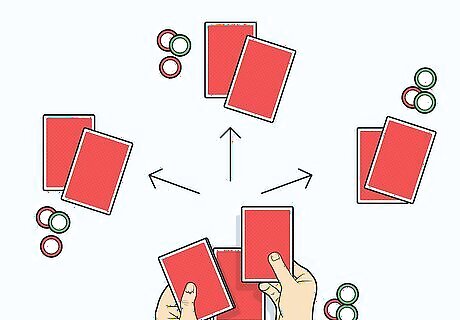
Deal each player two cards face down. Starting with the player to your left, go around the table clockwise and slide one card to each person. Then, repeat the process so that each player has a total of two cards. You should be the last person to receive your final card. These two cards are known as the “hole” cards. You and the other players will keep them hidden until the showdown, matching them with five soon-to-be-revealed community cards in an attempt to put together the winning hand.Tip: In high-stakes games like poker and its many variations, it’s customary to distribute the cards one at a time rather than giving each player all of their cards at once.
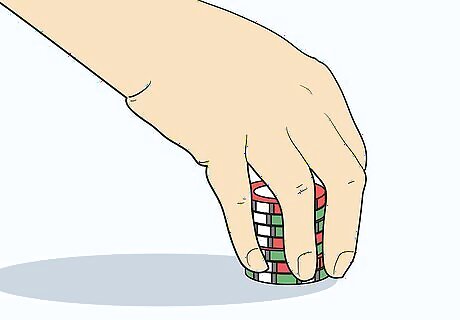
Signal for the players to open the pre-flop betting. Betting always begins with the player to the left of the Big Blind. During the pre-flop betting, each player has the option of either “calling,” or matching the bet set by the Big Blind, “raising,” or upping the bet to double the amount of the Big Blind, or “folding,” or pushing their cards away to signal that they concede the hand. The two players sitting to the left of the dealer in a clockwise direction are known as the “Small Blind” and “Big Blind,” respectively. These players are obligated to make “blind” wagers to ensure that there’s money in the pot when the game begins. The Big Blind’s bet is typically twice the amount of that of the Small Blind. There are four separate stages of betting in Texas Hold ‘em. The pre-flop is the preliminary betting stage, and takes place before any of the community cards are revealed.
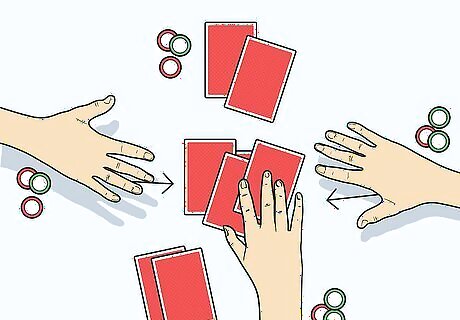
Collect all of the cards folded during the opening bet. Whenever a player chooses to fold, they’ll push their hand toward the center of the table. After every player has made their move, take all of the forfeited cards and arrange them together in a stack, which is commonly referred to as the "muck pile.” Position the muck pile face-down near the center of the table underneath the hand you're using to hold the deck. To avoid confusion, be sure to keep the muck pile away from the deck, the hole cards, or any other active cards on the table. Make sure you also move all of the chips wagered into a pile near the center of the table after each round of betting from this point on.
Revealing the Flop, Turn, and River
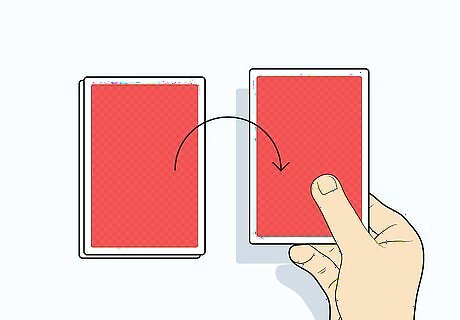
Place the first card in the deck face-down on the table to discourage cheating. Discarding the top card in this way is known as "burning." This is done to make it impossible for less honest players to gain an unfair advantage by tracking pre-marked cards. Keep the burnt card close to the rest of the stack to make it clear that it's not in play. Burning the top card in the deck only serves as a precautionary measure, and won’t affect the randomization of the cards.
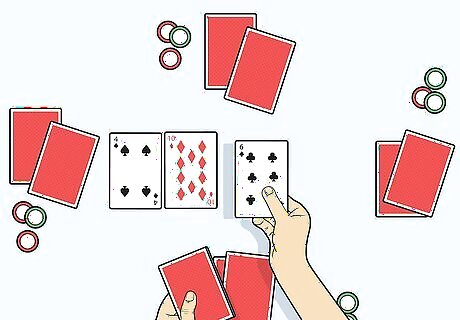
Turn over the three cards at the top of the deck to deal the “flop.” Deal each card one after the other in a straight line in the center of the table. The players now have their first full hand, made up of their two hole cards and the three community cards in the flop. At this point, the betting is no longer blind. Once you’ve dealt the flop, the next round of betting will begin. This round will only include the players who haven’t already folded, starting with the first active player to your left. Flop betting will continue until each player remaining has chosen to check (or pass their turn if no betting action has occurred yet), bet, raise, call, or fold.
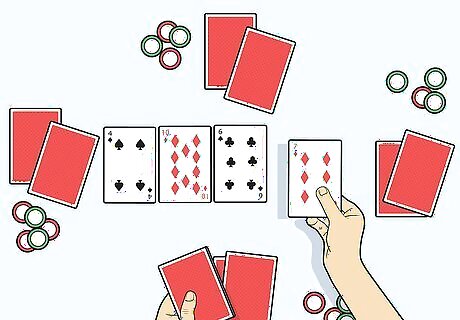
Flip a fourth card to reveal the “Turn” and initiate the next round of betting. The Turn is the name for the fourth community card put into play. Burn the first card in the stack as you did when dealing the flop, then situate the next card alongside the other three. Once again, players will have the choice to check, bet, raise, call, or fold. If every player folds except one, that player is automatically declared the winner and claims whatever is in the pot at this phase of the game.Tip: Don’t forget to scoop up any cards that are folded during this round of betting and add them to the muck pile.
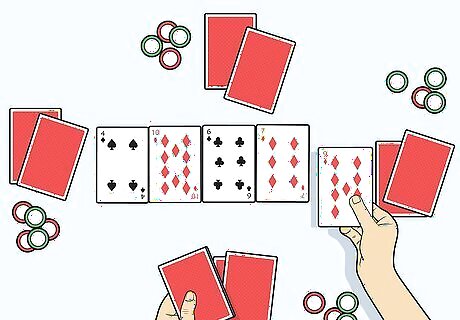
Set down a fifth card to play the "River" and open the last round of betting. The River is the fifth and final community card. Burn the top card in the stack and place the River card face up on the table right beside the Turn card. Give the players time to review their hands and place their bets before continuing. Once you’ve turned over the River, players will have a total of seven cards (two holes cards plus the five community cards) with which to build their final hands.
Overseeing the End of the Hand
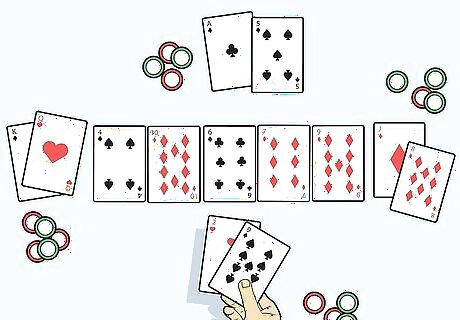
Instruct the remaining players to reveal their cards for the Showdown. Traditionally, the last player to bet or raise during the final round is the first to put down their cards. After that, the Showdown proceeds around the table clockwise. If everyone chose to check in the final round, the player to your immediate left will automatically be designated as the first to show. During the Showdown, players also have the option of “mucking,” or surrendering their hand without turning their cards over. Players who muck aren’t eligible to win the pot.
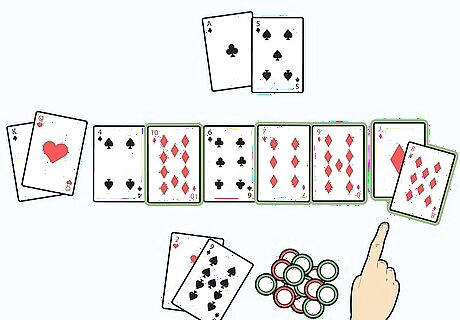
Announce the winning hand clearly. Hands follow the same basic value rankings in Texas Hold 'em as in most other popular versions of poker. Be sure to point out where the victorious player’s cards trump the other players’ so that there won’t be any doubt or confusion. Keep in mind that aces are both high and low in Texas Hold 'em, meaning they can be played before a 2 or after a King in a straight.Tip: Leave the cards out in plain sight on the table so that everyone has plenty of time to see the winning hand for themselves.
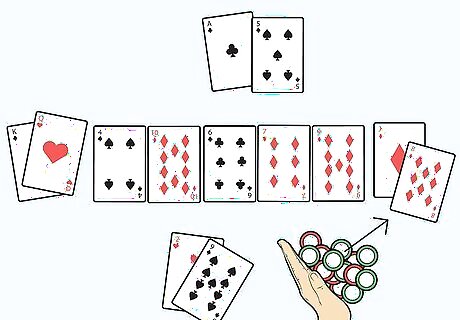
Push the pot to the player with the strongest hand. Now that the hand has ended, the victor is free to collect their winnings. After presenting the pot, turn your hands over to show that you haven’t secretly palmed any chips. This is a sign of good faith among amateur players, who typically place bets in addition to dealing. In the event of a tie, the pot should be “chopped,” or split evenly among the players with the highest hands.
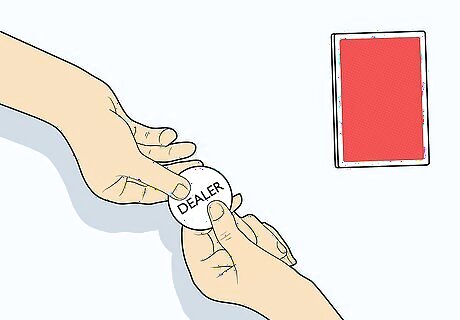
Pass the dealer button to the player on your left to begin the next hand. The player who was the Small Blind in the previous round will now serve as the new dealer. In this way, the roles of dealer, Small Blind, and Big Blind will continue to rotate around the table so that every player gets a turn. If at any point a player decides to withdraw from the game before their turn as dealer, the person to their left becomes the next dealer in line.




















Comments
0 comment